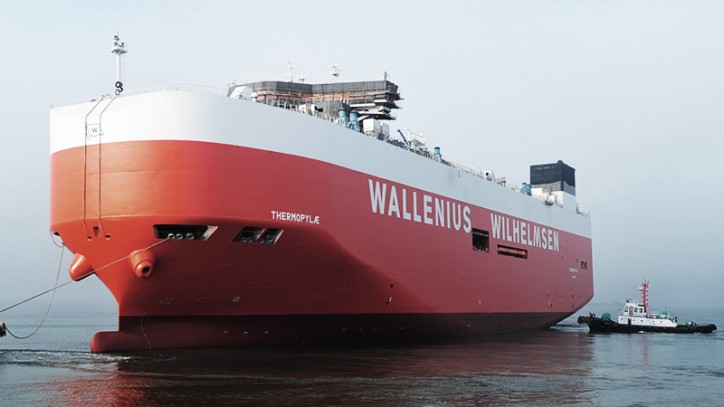The expanding process of the Panama Canal has enabled WWL to develop its next generation of RoRo carrier vessels.
When taking into consideration the Panama Canal’s importance to international trading, its size has always been a design constraint regarding shipping vessels. However, with the current expansion project in place, WWL has decided to design a new RoRo carrier that is bigger and far more adaptive to the industry demands and customer needs of today.
“Now that we can freely expand our carriers’ width, we can also improve in other various areas as well, thus we have initiated a wide consultation process with our clients, maritime authorities and technical experts in the field,” commented Geir Fagerheim, Head of Fleet Management WWL. “The obstacle we had to overcome was to come up with an optimal design concept that would allow us to not only increase capacity and flexibility, but also reduce fuel consumption along with carbon emissions.”
The result of the company’s efforts is the new High Efficiency RoRo (HERO) carrier – a modern vessel on the cutting edge that is equipped to suit industry demands, as well as of now as it is for the years to come.

M/V Thermopylae, Image: WWL
The process of designing and building the HERO carrier cost the company a lot of time, and research and test related expenses. The initial design development phase of the next generation carrier began in 2010 and it was a co-op effort between WWL and the technical departments of Wallenius Marine and WW ASA.
During the process, the company strived to meet industry demands and customer needs in the best possible way, while still bearing in mind that which was technically feasible. One key customer demand was improving the capacity as well as the flexibility of the carrier – the new RoRo vessel has liftable decks that provide various multiple configurations, allowing for the optimization of space and storage capacity.
Another essential requirement posed by many stakeholders, was the need to reduce the ship’s carbon footprint. In order to comply with the above-mentioned requirement, the company implemented a number of innovations. For example, its rudder decreases drag and also improves surrounding water flow, thus causing less strain on the vessel’s propulsion systems. Along with that, the novel bow design reduces wave resistance and thus again fuel consumption.
A new Exhaust Gas Cleaning system, the very first of its kind on this type of vessel, makes sure that sulphur emissions are in full compliance with the new Emission Control Area regulations and also reduces particulate emissions by up to 70%. Emissions of SOx, CO2 and NOx have also been noted to be reduced. The HERO complies on all accounts with the Green Passport, the International Maritime Organisation’s guidelines regarding ship recycling.
“With the HERO carriers we are able to transport a much wider range of cargo types, as well as cover all the core trading routes,” comments Fagerheim. “This gives us the opportunity to provide all of our users with much greater capacity and offer them a better, more efficient service in general.”
The first HERO ship, M/V Thermopylae, was delivered this month and an additional seven vessels are scheduled for delivery throughout 2015 and 2016 respectively.